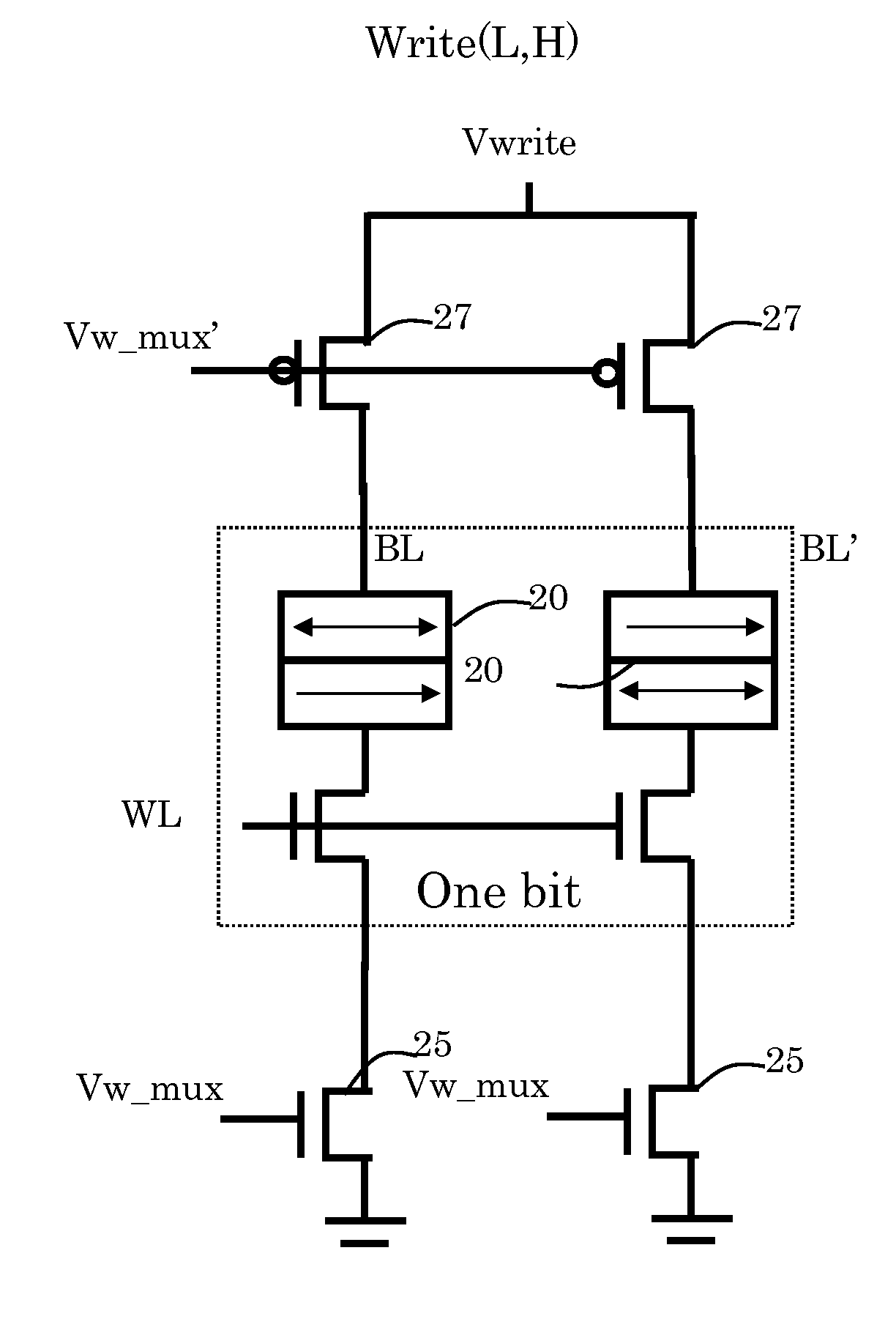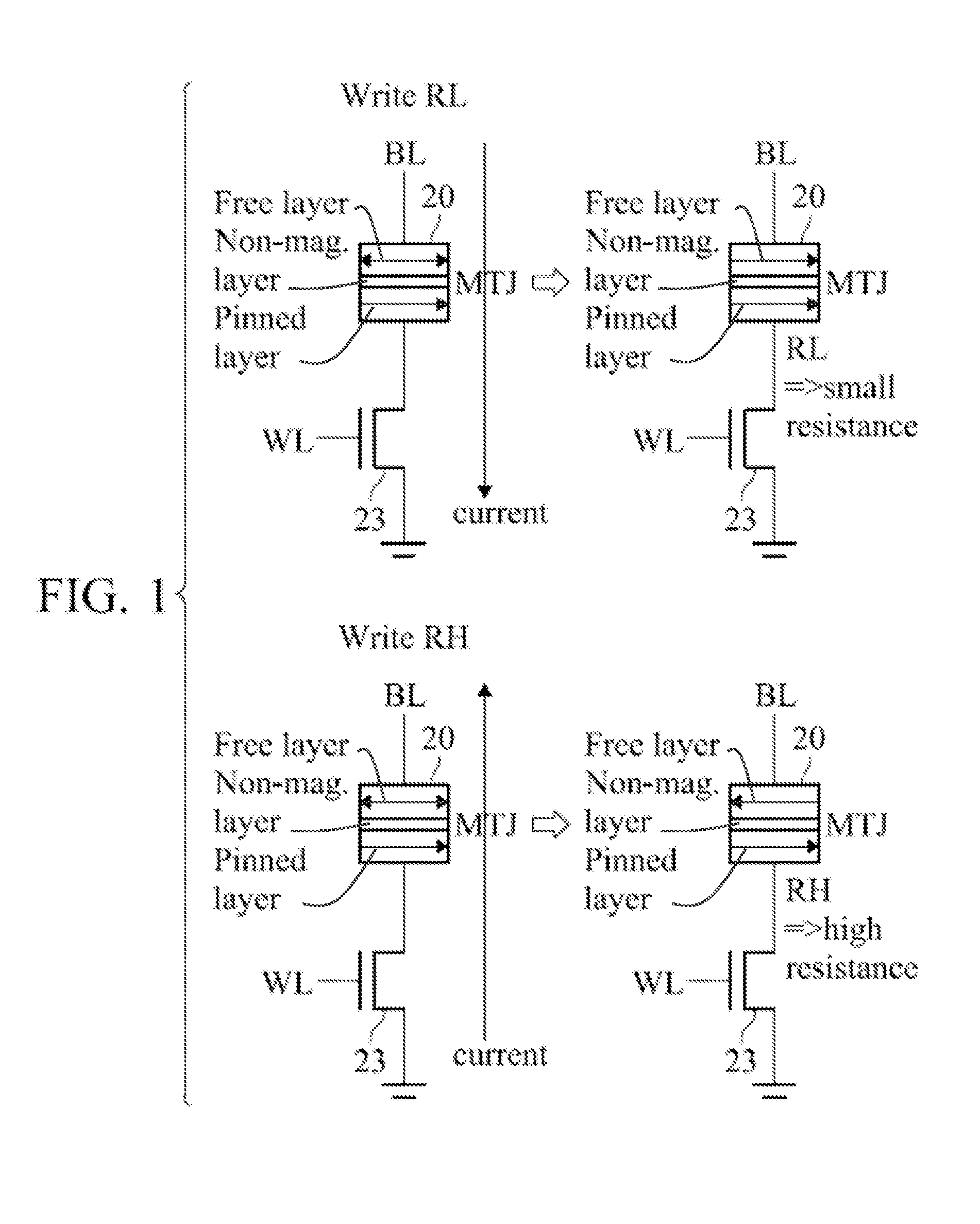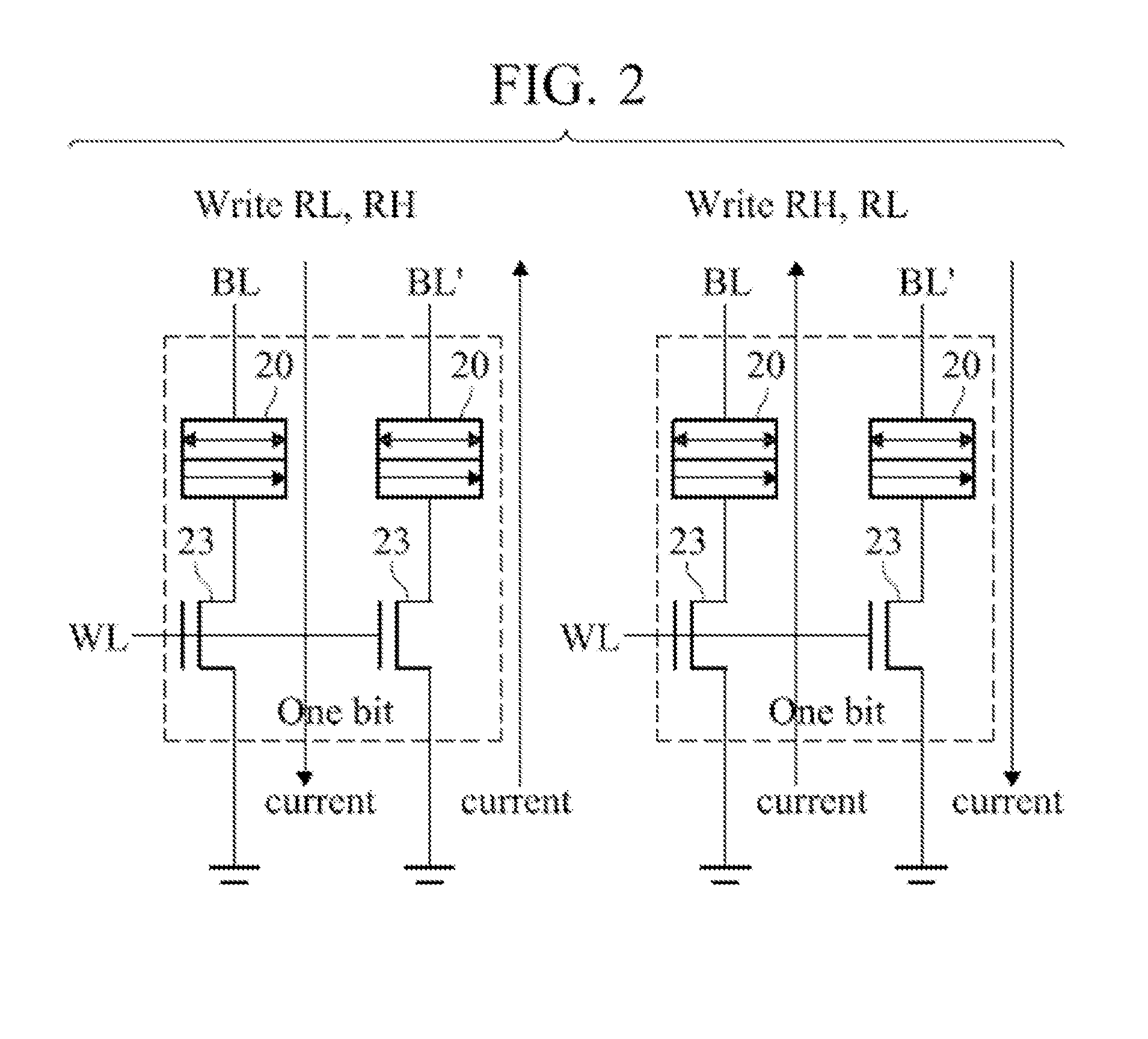Differential MRAM structure with relatively reversed magnetic tunnel junction elements enabling writing using same polarity current
a technology of magnetic tunnel junction elements and differential mram, which is applied in the direction of information storage, static storage, digital storage, etc., can solve the problems of inability to write using the same polarity current, memory circuit may be considered defective, and inherent risk of read-disturb errors, so as to simplify the manufacturing process
- Summary
- Abstract
- Description
- Claims
- Application Information
AI Technical Summary
Benefits of technology
Problems solved by technology
Method used
Image
Examples
Embodiment Construction
[0022]One magnetic layer of a magnetoresistive magnetic tunnel junction (MTJ) element has a permanently aligned field and is generally termed the pinned layer or reference layer. The other magnetic layer has a changeably-aligned field that either is aligned with the field of the pinned layer (parallel and with the same north / south polarity), or directly opposite (anti-parallel) to the field of the pinned layer. The layer with the changeable field orientation is termed the free layer or sense layer. The free and pinned layers are separated by a barrier layer.
[0023]When the fields in the two layers are parallel, the electrical resistance to current flowing through the two layers and the separating conductive barrier layer of the magnetic terminal junction (MTJ) element is relatively lower and when the fields in the two layers are anti-parallel, the electrical resistance is relatively higher. According to Ohm's Law (V=IR), the resistance of the element produces a voltage when a current...
PUM
 Login to View More
Login to View More Abstract
Description
Claims
Application Information
 Login to View More
Login to View More - R&D
- Intellectual Property
- Life Sciences
- Materials
- Tech Scout
- Unparalleled Data Quality
- Higher Quality Content
- 60% Fewer Hallucinations
Browse by: Latest US Patents, China's latest patents, Technical Efficacy Thesaurus, Application Domain, Technology Topic, Popular Technical Reports.
© 2025 PatSnap. All rights reserved.Legal|Privacy policy|Modern Slavery Act Transparency Statement|Sitemap|About US| Contact US: help@patsnap.com



